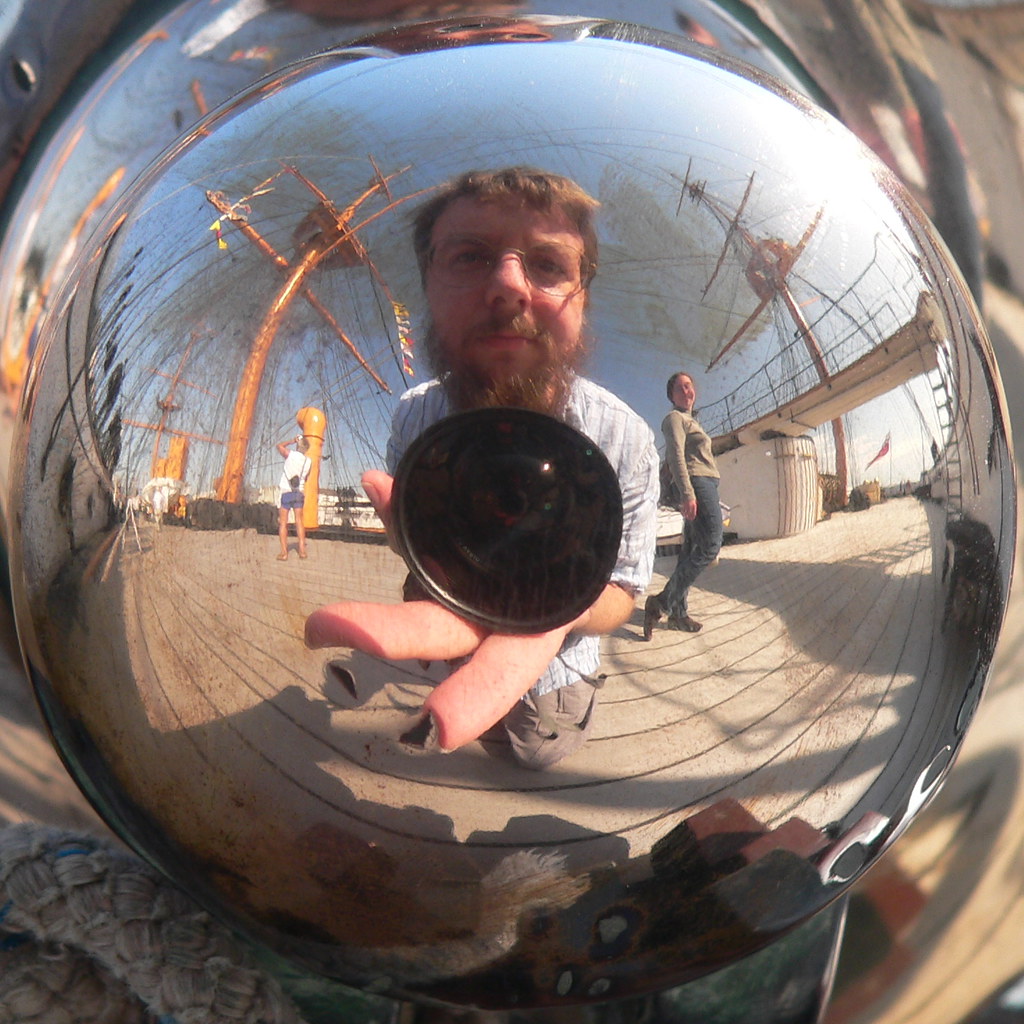V got me something for my birthday that I've wanted for many, many years. I have wanted to get my ham radio license for a long time and finally did in January 2012. I got a handheld 2-meter band transceiver starting out and had some fun hearing local communications and picking up weather satellite flyovers. However, what I really wanted was to get on the 10-meter band because of the 11 year solar maximum (which dramatically increases the range of communications). V got me a quad band that has 10 meter, 6 meter, 2, meter and 70 cM bands. These refer to the wavelength of the radio signal in frequency these are 29 MHz, 50 MHz, 144 MHz, and 430 MHz respectively.
You can see the speed of light at play here; Hertz is cycles per second; 29 MHz means 29 million cycles per second on the 10 meter wavelength band; radio waves are a form of light waves (electromagnetic radiation); the speed of light is 299,792,498 meters per second, so 10 meter wavelengths of light would pass by at 29,979,498 m/s or approximately 29 MHz in the range of wavelengths around 10 meters.
I hooked it up to a car battery and portable antenna as fast as possible and got on the 10-meter band. I picked up a very weak CW Morse code signal and think it might be a beacon but when I went back later I couldn't find it. I went on the 2 meter band and picked up the familiar NOAA weather radios here on O'ahu and one broadcasting from Maui. I listened in on two nets that organize emergency ham communications and even picked up two NOAA satellite flybys.
I also picked up what seems to be communication with or between airplane pilot(s), and what seems to be marine radio ship communications on the maritime band. The latter were not in English one sounded a little like Spanish words from time to time but I think it might have actually been Filipino, another ship sounded like Japanese.
On the six meter band (at 50.062 MHz) I got a beacon here in Hawai'i and connected the audio to my computer to make a recording. Here's what it looks like.
It is Morse code. You can see the · and – by the width of the gaps in the background static. From left to right the letters are:
···– V
···– V
···– V
···– V
···– V
···– V
–·· D
· E
–·– K
···· H
–···· 6
···· H
·· I
–··–· /
–··· B
– –·– Q
– T
···· H
–··· B
·–·· L
– – – – – 0
·– – – – 1
–··–· /
– – – O
·– A
···· H
··– U
···· H
·· I
So the transmission is VVV VVV DE KH6HI/B QTH BL01 / OAHU HI .
VVV means "attention there is an incoming transmission".
DE means "I am".
KH6HI is the call sign. The first part, KH6 indicates a call sign issued for Hawai'i. The last part is unique to the operator.
QTH means the geographic location of the transmission.
BL01 is a grid square system (e.g., http://www.levinecentral.com/ham/grid_square.php) that, in this context, identifies the location as the Western half of O'ahu (but could also be the southern half of Kaua'i).
Then the translation is broadcast using the postal code for Hawai'i, "OAHU HI".
Subscribe to:
Post Comments (Atom)


No comments:
Post a Comment